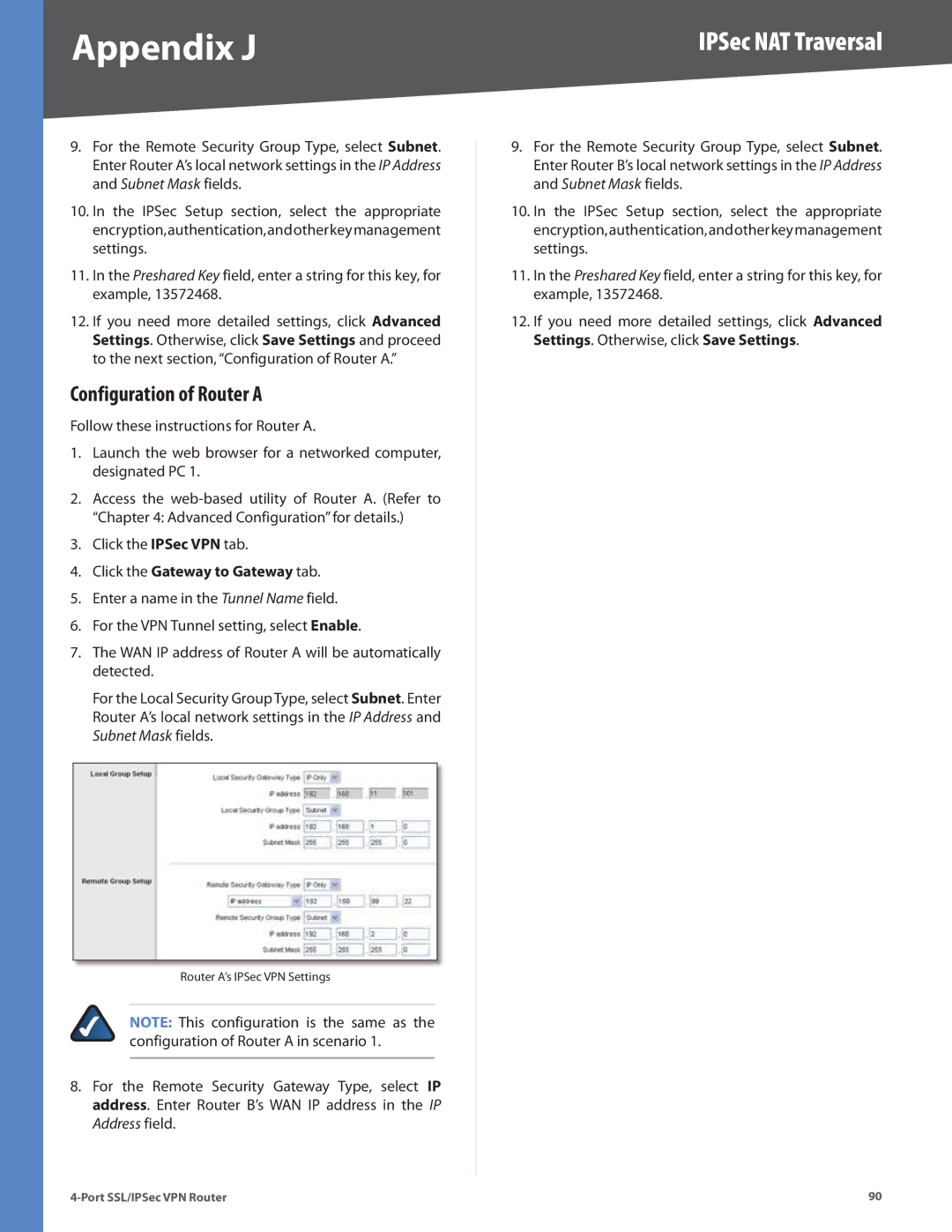
Appendix J | IPSec NAT Traversal |
9.For the Remote Security Group Type, select Subnet. Enter Router A’s local network settings in the IP Address and Subnet Mask fields.
10.In the IPSec Setup section, select the appropriate encryption,authentication,andotherkeymanagement settings.
11.In the Preshared Key field, enter a string for this key, for example, 13572468.
12.If you need more detailed settings, click Advanced Settings. Otherwise, click Save Settings and proceed to the next section, “Configuration of Router A.”
Configuration of Router A
Follow these instructions for Router A.
1.Launch the web browser for a networked computer, designated PC 1.
2.Access the
3.Click the IPSec VPN tab.
4.Click the Gateway to Gateway tab.
5.Enter a name in the Tunnel Name field.
6.For the VPN Tunnel setting, select Enable.
7.The WAN IP address of Router A will be automatically detected.
For the Local Security Group Type, select Subnet. Enter Router A’s local network settings in the IP Address and Subnet Mask fields.
Router A’s IPSec VPN Settings
NOTE: This configuration is the same as the configuration of Router A in scenario 1.
8.For the Remote Security Gateway Type, select IP address. Enter Router B’s WAN IP address in the IP Address field.
9.For the Remote Security Group Type, select Subnet. Enter Router B’s local network settings in the IP Address and Subnet Mask fields.
10.In the IPSec Setup section, select the appropriate encryption,authentication,andotherkeymanagement settings.
11.In the Preshared Key field, enter a string for this key, for example, 13572468.
12.If you need more detailed settings, click Advanced Settings. Otherwise, click Save Settings.
90 |
